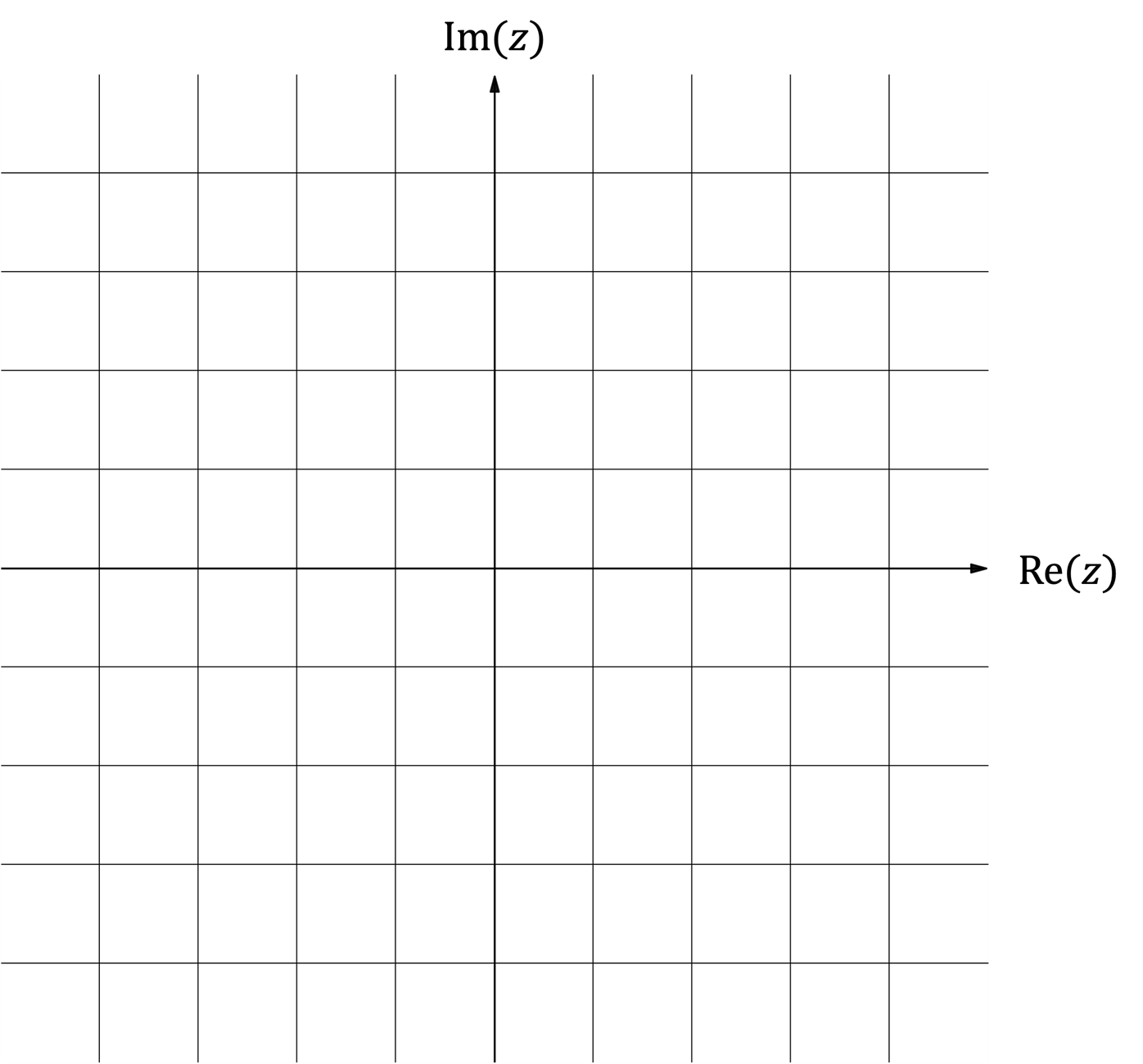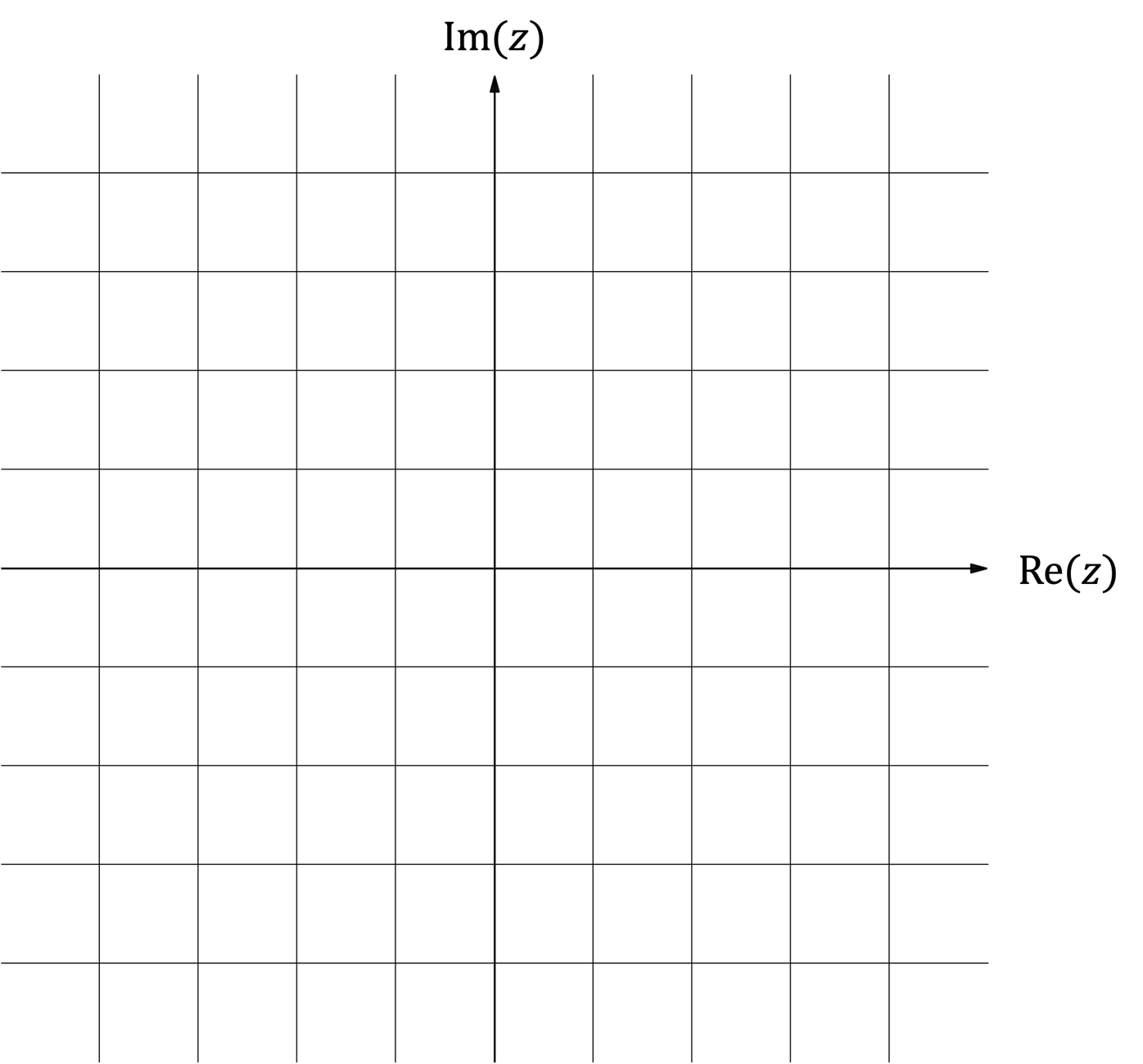Consider , where
and
.
Express in the form
.
Write the complex numbers and
in the form
.
Express in the form
Did this page help you?
Select a download format for 1.9 Further Complex Numbers
Consider , where
and
.
Express in the form
.
How did you do?
Write the complex numbers and
in the form
.
How did you do?
Express in the form
How did you do?
Did this page help you?
Solve the equation , giving your answers in the form
.
How did you do?
Did this page help you?
Let and
Giving your answers in the form find
How did you do?
Write and
in the form
How did you do?
Find giving your answer in the form
How did you do?
It is given that and
are the complex conjugates of
and
respectively.
Find giving your answer in the form
How did you do?
Did this page help you?
Let and
.
Express
How did you do?
Find giving your answer in the form
.
How did you do?
Find giving your answer in the form
How did you do?
Sketch and
on a single Argand diagram.
How did you do?
Did this page help you?
It is given that that and
Find the value of for
How did you do?
Find the least value of such that
How did you do?
Did this page help you?
Consider the complex number where
and
Express in the form
How did you do?
Sketch and
on the Argand diagram below.

How did you do?
Find the smallest positive integer value of such that
is a real number.
How did you do?
Did this page help you?
Consider the complex number .
Express in the form
, where
and
.
How did you do?
Find the three roots of the equation , expressing your answers in the form
, where
and
.
How did you do?
Did this page help you?
Consider the equation , where
.
Find the four distinct roots of the equation, giving your answers in the form , where
How did you do?
Represent the roots found in part (a) on the Argand diagram below.

How did you do?
Find the area of the polygon whose vertices are represented by the four roots on the Argand diagram.
How did you do?
Did this page help you?
Consider the complex numbers and
.
Write and
in the form
, where
and
.
How did you do?
Find the modulus and argument of .
How did you do?
Write down the value of .
How did you do?
Did this page help you?
Let , where
.
Verify that and
are the second roots of
.
How did you do?
Hence, or otherwise, find two distinct roots of the equation , where
. Give your answer in the form
, where
.
How did you do?
Did this page help you?
The complex numbers and
are roots of the cubic equation
where
Write down the third root, , of the equation.
How did you do?
Find the values of and
.
How did you do?
Express
and
in the form
.
How did you do?
Did this page help you?
Consider the equation where
.
Find the value of for which one of the two distinct roots is
.
How did you do?
Find the range of values of for which the equation has two distinct, real roots.
How did you do?
Did this page help you?
Consider the complex number .
Show that is a root of the cubic equation
How did you do?
Find the other two roots of the cubic equation in part (a).
How did you do?
Did this page help you?
Consider where
.
Show that .
How did you do?
Did this page help you?
Consider the equation .
How did you do?
The roots and
are represented by the points A and B respectively on an Argand diagram.
Find AB.
How did you do?
Did this page help you?
Consider the equation , where
.
Find the four distinct roots of the equation, giving your answers in the form where
.
How did you do?
Did this page help you?
Consider the complex numbers and
.
Express
How did you do?
Find the exact value of .
How did you do?
Find , giving your answer in the form
, where
and
.
How did you do?
Without drawing an Argand diagram, describe the geometrical relationship between and
.
How did you do?
Did this page help you?
Find all the powers .
How did you do?
Find the area of the shape made by the powers when plotted on an Argand diagram.
How did you do?
Did this page help you?
Let .
Write down the value of .
How did you do?
Let .
Prove the results
How did you do?
Using the results from part (b), describe fully the geometrical interpretation of dividing by
.
How did you do?
Did this page help you?
Consider the equation where
. The complex numbers
and
are three distinct roots of the equation.
Find and
giving your answers in the form
.
How did you do?
Sketch on the Argand diagram below.

How did you do?
and
represent the vertices of a triangle.
Find the area of the triangle.
How did you do?
Did this page help you?
The complex numbers and
are roots of the cubic equation
where
.
Find the values of and
.
How did you do?
Express and
in the form
, where
and
.
How did you do?
Did this page help you?
Let , where
and
are real constants.
Given that is a root of the equation
, show the roots
on the Argand diagram below.

How did you do?
Did this page help you?
Consider the equation , where
.
Given that one of the distinct roots is , find
How did you do?
On an Argand diagram and
are represented by the points A, B and C respectively.
Find the area of the triangle ABC.
How did you do?
Did this page help you?
Consider the complex numbers and
, where
,
.
Use geometrical reasoning to find the two possibilities for , giving your answers in exponential form.
How did you do?
Did this page help you?
Consider the equation , where
and
.
Given that one root is and another root is
, find the possible values of
and
.
How did you do?
Did this page help you?
Consider the complex number .
Use De Moivre’s theorem to find the value of .
How did you do?
Use the principle of mathematical induction to prove, for all , that
How did you do?
Show that the result in part (b) is true for all
How did you do?
Did this page help you?
Consider the equation .
Given that the product of the roots is 31, find the roots of the equation, expressing your answers in the form , where
and
.
How did you do?
Let S be the sum of the roots found in part (a).
Show that and find the value of
.
How did you do?
The roots are represented on an Argand diagram.
Describe the geometrical shape made by the five roots.
How did you do?
Did this page help you?
Consider the equations and
, where
. Find
giving your answer in the form
, where
and
.
How did you do?
Did this page help you?
By first expressing and
in the form
where
and
, show that
.
How did you do?
Did this page help you?
Consider the complex number .
Find the modulus and argument of z.
How did you do?
Solve for
.
How did you do?
Did this page help you?
Let .
Show that
How did you do?
Use the results found in part (a) to find the sum of the infinite series
How did you do?
Did this page help you?
The primary square root of a complex number is defined as
, where
and
. If
then the value for
is chosen such that
. Note that the other square root of
will then be given by
.
Show that
How did you do?
Given that , derive a formula for
in terms of
and
, and explain why
in this case will always have the same sign (positive, negative, or zero) as
.
How did you do?
Hence show that in general
with the choice of the positive or negative value being dependent on the properties of .
How did you do?
Explain what must be true of for each of the following to be true:
How did you do?
Did this page help you?